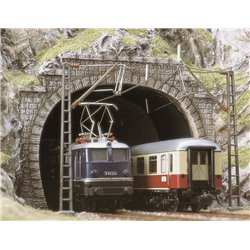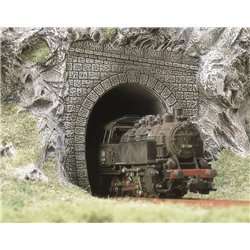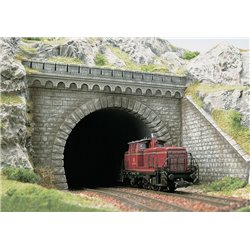Achieving seamless colour blending is an essential skill that can elevate a model's realism and visual appeal....
No products
Product successfully added to your shopping cart
There are 0 items in your cart. There is 1 item in your cart.
Search Tips
Christmas and New Year
We are dispatching orders every weekday apart from Christmas Day, Boxing Day and New Year's Day.
If you order is time critical, select next day delivery at checkout.
The shop in Sandown is closed from 25th December, reopening on 30th December.
How do I make a tunnel on my railway layout?
Creating a tunnel on your model railway layout can add depth and realism to your setup. Here’s a step-by-step guide tailored for a UK modeller:
Materials you may need:
- Cardboard or plywood for the tunnel base
- Modelling plaster or foam for shaping the hills or mountains
- Tunnel portals (these can be purchased pre-made or crafted)
- Scenery materials such as flock, trees and grass for detailing
- Paints to match the surrounding landscape
- PVA glue or hot glue gun for assembly
Steps to build your tunnel:
Plan the location
Decide where your tunnel will be. It could cut through a hillside or a small mountain. Ensure the track has a smooth gradient before and after the tunnel to avoid derailments.Create the base and frame
Lay down your track first, ensuring it runs smoothly. For the tunnel, you can construct a simple framework out of cardboard, plywood, or foam. This will form the rough shape of the hill or mountain that the tunnel will pass through. Make sure there's enough clearance inside for your trains to pass through without obstruction.Tunnel portals
Attach tunnel portals to both ends of the tunnel. You can buy these ready-made from model shops or you can build your own using plaster, foamboard or even printed card. Ensure they are securely attached and aligned with the track.Shape the terrain
Using foam, plaster, or papier-mâché, build up the terrain around the tunnel. Be creative with the shape of the hill or mountain. Carve or mould the materials to get a natural look, ensuring it blends seamlessly with the rest of your layout.Paint and texture
Once the structure has dried, paint the hill or mountain using earthy tones. Dry brushing with lighter colours can highlight the texture and make it more realistic. After painting, apply scenic materials like grass flock, bushes and trees to create a natural landscape.Finishing touches
Add small details such as bushes, rocks or weathering to the tunnel portals to blend them into the landscape. You might even want to place a few figures or vehicles around the entrance to bring the scene to life.Test the tunnel
Before finishing the surrounding scenery, run a train through the tunnel several times to make sure it moves smoothly without catching on the sides or roof.
By following these steps, you'll have a custom tunnel that enhances the realism and immersion of your railway layout.
Click here to receive the tips weekly in your mailbox. You can unsubscribe at any time.










